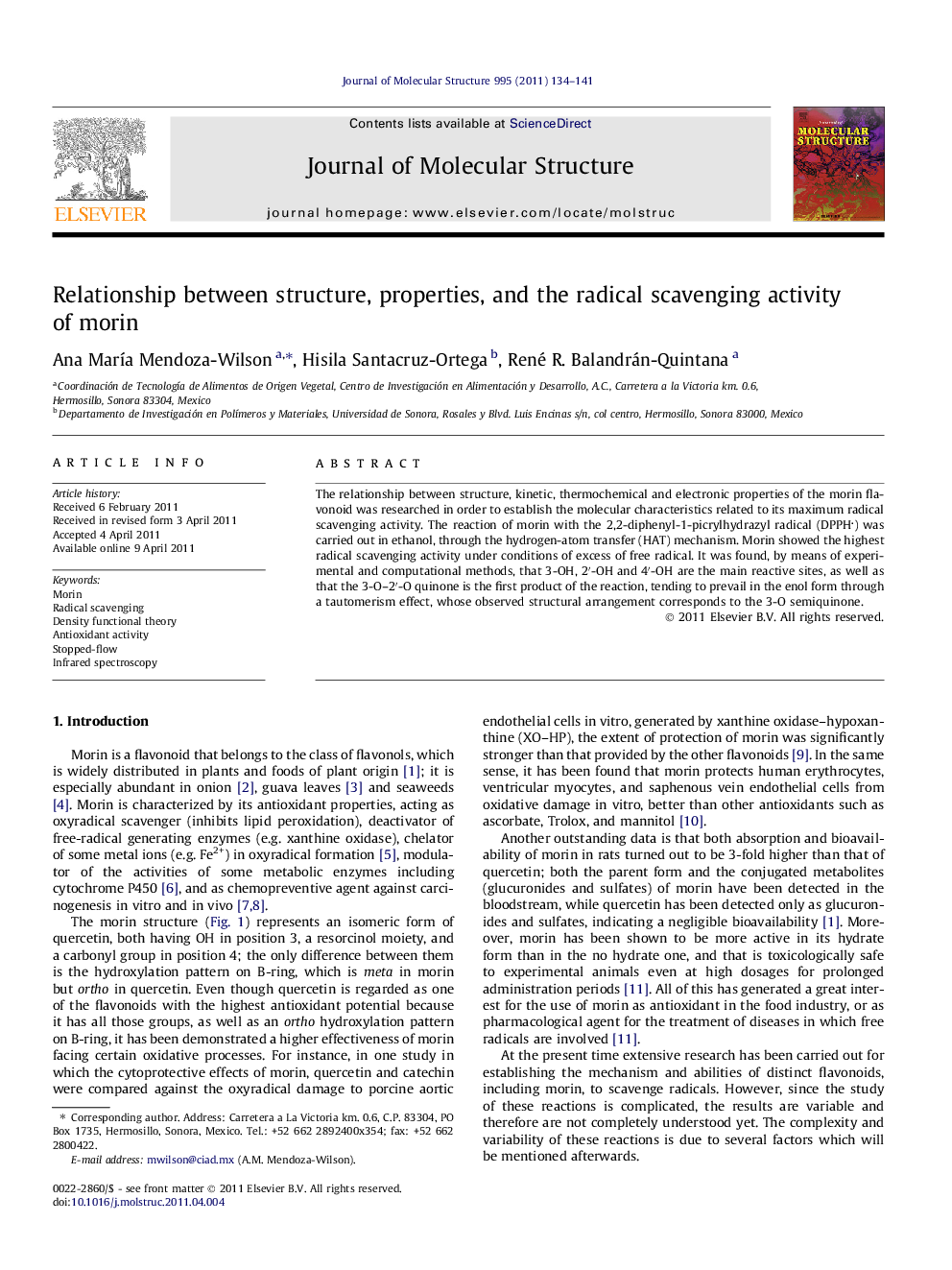| Article ID | Journal | Published Year | Pages | File Type |
|---|---|---|---|---|
| 1406053 | Journal of Molecular Structure | 2011 | 8 Pages |
The relationship between structure, kinetic, thermochemical and electronic properties of the morin flavonoid was researched in order to establish the molecular characteristics related to its maximum radical scavenging activity. The reaction of morin with the 2,2-diphenyl-1-picrylhydrazyl radical (DPPH) was carried out in ethanol, through the hydrogen-atom transfer (HAT) mechanism. Morin showed the highest radical scavenging activity under conditions of excess of free radical. It was found, by means of experimental and computational methods, that 3-OH, 2′-OH and 4′-OH are the main reactive sites, as well as that the 3-O–2′-O quinone is the first product of the reaction, tending to prevail in the enol form through a tautomerism effect, whose observed structural arrangement corresponds to the 3-O semiquinone.
► 3-OH, 2′-OH and 4′-OH are the main reactive sites of morin. ► The 3-OH has the lowest BDE and ΔG values (77.98 and 5.24 kcal/mol, respectively). ► The quinone 3-O–2′-O is the first product of the reaction. ► The competition of morin against DPPH is more effective under excess of free radical. ► The highest ks value (4571 M−1 s−1) was related to the lowest stoichiometry (n = 1).
